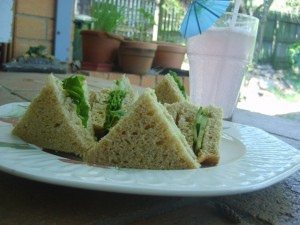Health-conscious Australians may soon be adding watercress to their plates.

Mounting evidence shows watercress may combat certain types of cancer and food scientists at the Department of Employment, Economic Development and Innovation (DEEDI) are investigating the most nutritious ways of preparing and cooking the leaves.
Watercress has had a place on tables in Asia and Europe for centuries. Even Socrates was convinced of the health promoting abilities of the vegetable. He built his first hospital next to natural springs growing watercress so he could easily reap the benefits of this potent food. The cancer fighting capability of watercress, a member of the brassica family, is due to the high levels of phytochemicals known as isothiocyanates (ITCs). These are the same disease fighting components found in broccoli and cabbage.
But despite its popularity around the world, the peppery flavoured plant is seldom used in Australia.

According to DEEDI scientist Dr David Williams it is the ITCs that provide the plant’s hot and tangy flavour.
Watercress is a bit of a paradox,” Dr Williams said.
As a fresh salad vegetable it is cool when first experienced, and then hot when chewed.
In cancer-fighting terms, watercress is best eaten raw either in salads or in sandwiches as spicy filler.
Eating it raw has the advantage of stopping the breakdown of the vitamins A, B1, B2, C and folate, as watercress is also a rich source of these vitamins.
Our results have shown when watercress is cooked it releases large amounts of ineffective compounds called nitriles. The high levels of iron in watercress are a disadvantage in these circumstances as it enhances this formation. While further research is needed to fully understand this anti-cancer capability of watercress, results so far confirm a significant health gain from adding this highly nutritious plant to your daily diet.â€
Submitted by David Burgin
Corporate Communications
Department of Employment, Economic Development and Innovation
GPO Box 46, BRISBANE QLD 4001